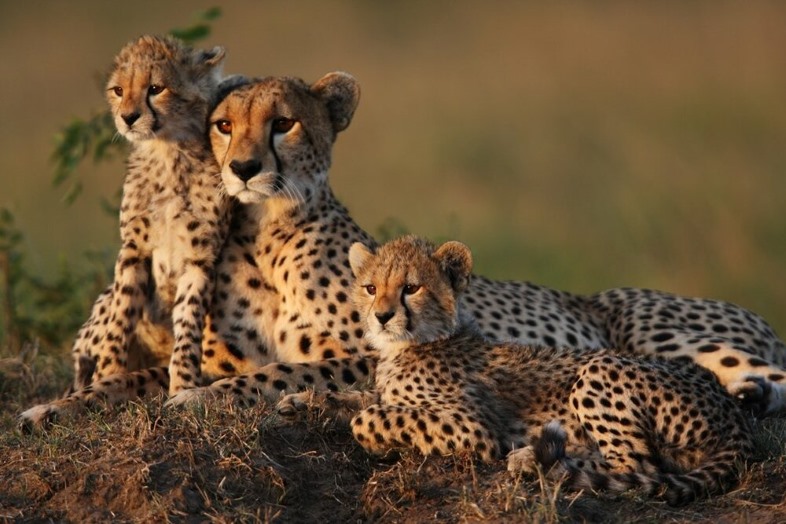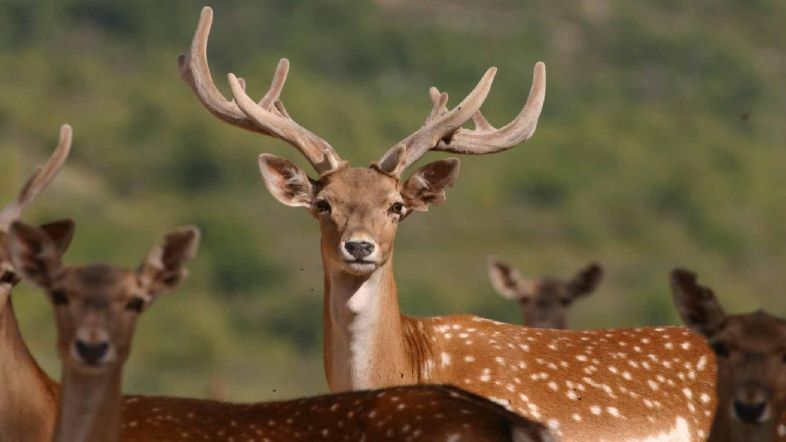The Asiatic cheetah is a critically endangered species, facing an uncertain future with only a small population of less than 40 remaining worldwide. Remarkably, Iran is the last habitat to harbor this majestic animal. These beautiful creatures roam free across the desert mountainous terrain in the eastern part of Iran, which is ecologically different from their African cousins. The Asiatic cheetah’s prey are ungulates such as wild goats and wild sheep that reside in the mountains, just like the leopards. To conserve this magnificent animal, national and international organizations have involved the Asiatic Cheetah conservation in two of the confirmed habitats in northeastern Iran – the Miandasht Wildlife Refuge and Touran Biosphere Reserve. The program has continued for many years and provided valuable information on these rare creatures’ survival and habitat. Recently, camera traps and direct observations suggest that no more than 20 cheetahs live inside these two areas, with a higher abundance found in the Touran Biosphere Reserve.
The Asiatic cheetah, or the Iranian cheetah, is a critically endangered subspecies of the leopard, of which only a few cubs remain in Iran today.
In general, there are 4 subspecies of cheetah in the world, all of them except the Asiatic cheetah are found in different regions of the African continent. Research shows that Asian cheetahs also lived in the African continent for centuries until they were introduced to the eastern and central Asia about 30,000 to 70,000 years ago.
Asiatic Cheetah or Iranian Cheetah?
Being used to have a wide distribution from North Africa and Arabia to India and Turkmenistan not so long ago, Asiatic cheetah is one of the rarest felines in the world and is under serious threat of extinction due to various human and environmental factors. The country of Iran is considered its last refuge in the world, for this reason the Asiatic cheetah is also known as the Iranian cheetah.
With the extinction of the Asiatic cheetah in Asian and African countries, this mammal became one of the endangered animals, the last examples of which are found in Iran. According to the new researches, there are less than 15 of this subspecies in Iran in an optimistic state, and unfortunately, it is now in the “critically endangered” category of the World Conservation Union.
How many Asiatic Cheetahs are left in the world?
Less than 40 Asiatic Cheetahs left in the world!
Where Asiatic Cheetahs Exist?
The Asiatic cheetah’s historical range includes countries like Saudi Arabia, Iraq, Jordan, Syria, India, Pakistan, Afghanistan, and Iran. However, today, it is primarily found in the arid regions of Iran. The cheetah’s habitat consists of vast plateaus, deserts, and hilly areas where they can hunt.
Asiatic Cheetah habitats in Iran are divided into three known zones. However, the population seems extinct in the western and southern habitats. Currently, Iran’s protected areas, such as the Miandasht Wildlife Refuge and Touran Biosphere Reserve, serve as crucial strongholds for the Asiatic Cheetah. These regions provide the minimum space and resources for the cheetah to thrive and hunt. Nevertheless, these two areas will not be enough for their survival in the long run.
Threats
Habitat Fragmentation & Loss
The Asiatic cheetah is in trouble because people are using more land for homes, farms, and roads. This means there is less space for the cheetah to live and find food and mates. This issue seems to be one of the main reasons for extinction in the western population.
Livestock Husbandry
When people move into areas where cheetahs live, problems happen. This can lead to cheetahs being killed. The way people take care of their farm animals also harms cheetahs. People who have farm animals like sheep use dogs to protect them from predators. Sometimes these dogs will attack or kill cheetahs.
Domestic camels also make it hard for cheetahs to find enough water in the desert as they use a high amount of water when they reach troughs.
Road kill
Road accidents are one of the main causes of the cheetah population decline in Iran. One to two Asiatic cheetahs are killed by vehicles on Iran’s roads annually. To prevent further loss of this precious species, it is important to take more actions such as installing speed cameras and improving road lighting. Fencing has been successfully tested to reduce accidents in recent years. We along with other NGOs working hard to convince the government to fence all hotspots in the corridor between Miandasht and Touran.
Lack of Data
There are other threats that have not yet been well studied, such as diseases, genetic issues, illegal trade of orphaned cubs, and exact distribution. The lack of enough budget, sanctions against the country, and prohibited equipment in Iran, such as satellite collars for cheetahs, made it difficult to gather sufficient data.









No comment